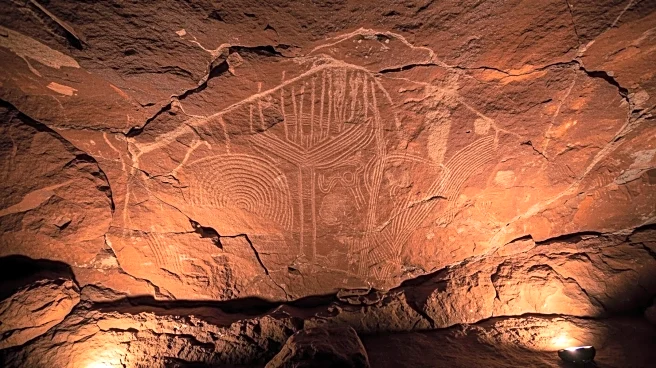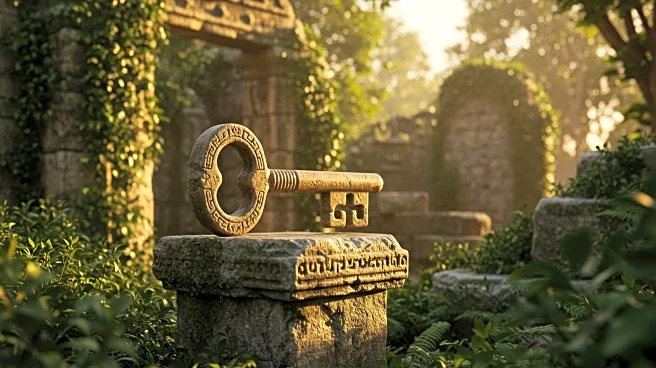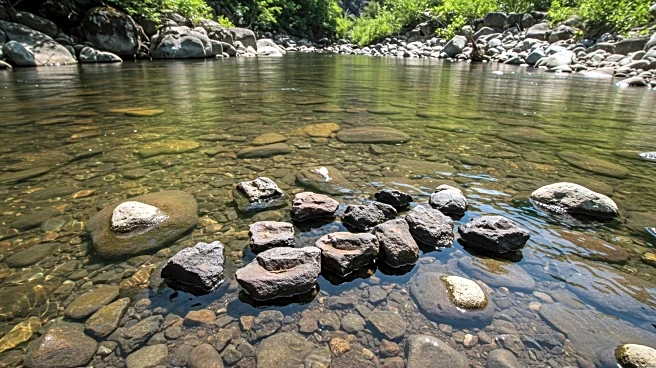What is the story about?
What's Happening?
Archaeologists have recorded over 800 finger flutings in Waribruk cave, southeastern Australia, marking a significant discovery in the study of ancient cultures. These markings, created by the GunaiKurnai people, date back over 8,000 years and are found deep within the cave, beyond the reach of natural light. Researchers from the GunaiKurnai Land and Waters Aboriginal Corporation and Monash University have used high-resolution photography to create 3D models of the cave walls, revealing the intricate patterns made by the ancient inhabitants. The markings are believed to have spiritual significance, connecting the GunaiKurnai people to ancestral powers.
Why It's Important?
This discovery sheds light on the cultural practices of one of the world's oldest living cultures, the GunaiKurnai people. The finger flutings offer insights into the spiritual beliefs and rituals of these ancient peoples, emphasizing the importance of caves in their cultural heritage. The study enhances understanding of Aboriginal rock art, which has often been overlooked in archaeological discussions. By documenting these markings, researchers can better appreciate the depth of cultural expression and the historical significance of such sites, contributing to the preservation of indigenous heritage.
What's Next?
Researchers are conducting sediment analysis, radiocarbon dating, and detailed studies of the finger grooves to gain further insights into the age and significance of the markings. These efforts aim to deepen understanding of the GunaiKurnai's cultural practices and the historical context of the finger flutings. The findings may influence future archaeological methods and the preservation of similar sites, ensuring that the cultural heritage of indigenous peoples is recognized and protected.
Beyond the Headlines
The study of finger flutings highlights the ethical considerations in preserving indigenous cultural sites. It underscores the importance of collaboration between researchers and indigenous communities to ensure respectful and accurate representation of cultural heritage. The findings may also prompt discussions on the broader implications of cultural preservation and the role of archaeology in understanding human history.
AI Generated Content
Do you find this article useful?













